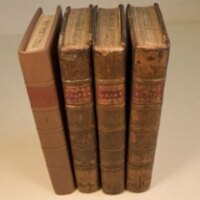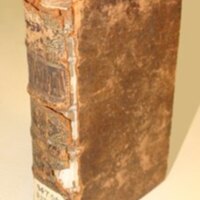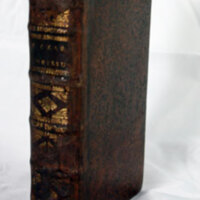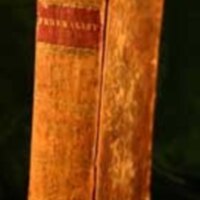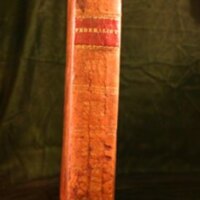Preservation Week 2021 and the Adopt-A-Book Program
Adopt-A-Book: The 1700s
The concept of "author's rights" was officially recognized by 1700, and cemented in 1710 thanks to the British Copyright Act (Feather, 2008, p. 235). Alexander Pope was one of the authors who understood that advantages could be taken within this act; he manipulated his rights to maintain personal control of his work, therefore establishing that the author should be seen as a partner, not just a creator (Feather, 2008, p. 235).
The 1700s also saw the spread of "news books" and magazines (Feather, 2008, p. 236). Ever heard of The Spectator? This popped up in the 1700s and 500 issues of it were published in 1711 and 1712, all of them essays on social and political issues (Feather, 2008, p. 236). The Gentleman's Magazine began in 1731 (Feather, 2008, p. 1731), and had the "month’s news (including fictionalized versions of parliamentary debates which it was illegal to report verbatim), lists and summaries of new books, and some general interest articles" (Feather, 2008, p. 236). According to the chapter, the magazine was meant to be read by "a middle-class audience, and to some extent at a provincial one" (Feather, 2008, p. 236).
Chapter books (called "chapbooks"--8 to 12 pages with an illustration on the front cover, retelling popular stories in an easier-to-read form) and the cheap reprint (mainly serial publication) made first appearances in the 1700s (Feather, 2008, p. 238).
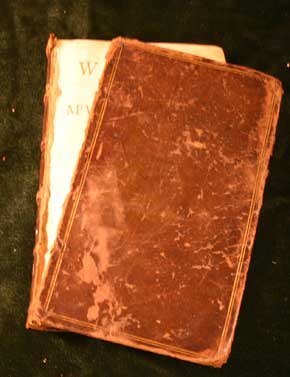
University of Missouri Special Collections call number: PR2752 .H366 1748
Donors: Steve Richardson and Sally Richardson
The works of shakespear: in nine volumes with a glossary, published in 1744.
This set only contains the dramatic works of Shakespeare, and a preface by Alexander Pope. Pope was a writer and poet, Shakespeare's contemporary, and known for works such as "The Rape of the Lock" and "An Essay on Criticism." [1] [2]
Shakespeare's plays and sonnets left a lasting impression on global society, not only because of his use of language, but because of the subject matter of many of his works. Othello, for example, is said to be a play "about colour"--though this wasn't always the case (Neill, ed., 2006, p. 1). It is also known as "a foundational document in the history of 'race'" (Neill, ed., 2006, p. 1). The subject matter and moral lessons of Romeo and Juliet are still hotly debated; is it a timeless romance, a "cautionary tale for teenagers inflicted by the sudden panges of love" (Hollingsworth, 2015, p. i), or a rebuke of parents who "let their conflicts inhibit their duties" (Hollingsworth, 2015, p. i)?
The boards were loose and therefore repaired, and the hinges received a kozo repair. [3]
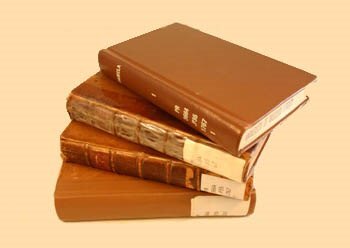
University of Missouri Special Collections call number: PR3664 .P35 1767
Donor: T. Robert Castle and Sandra Castle
Source: https://library.missouri.edu/giving/adoptabook/
Pamela, or Virtue Rewarded by Samuel Richardson.
Pamela was published in 1767. This monster of a book is split up into a set of 4 different books, and all were repaired in some way. It is an epistolary novel, which means it is made up of (fictional) letters and/or diary entries. It also falls into the category of "conduct books", which means that it was written to instruct girls and young women on the proper way to behave in different circumstances, and to be a guide in developing the proper moral compass [1]
The hinges were given a kozo repair, tape was removed from the spines, and the buckram-volume was rebound. [2]
According to Starner (2005), "For a volume to be rebound without losing text, it must have a gutter margin of at least one-quarter inch (Starner, 2005, p. 100). [3]

University of Missouri Special Collections call number: DK112.42.L93 N44 1716
Donors: T. Robert Castle and Sandra Castle
Source: https://library.missouri.edu/giving/adoptabook/
Le Czar Demetrius: histoire muscovite.
This book, published in 1716, is a record of a “false czar” who claimed to be the son of Russian royalty and took the throne in 1605 [1] He was killed soon after. There were actually three pretenders to the Russian throne, but this one was not actually Russian-born. Contrary to his protests in the following (hilarious and weird) video, he was indeed from Poland, gave favor to his Polish supporters over those in Russia, and married a Catholic wife. He was overthrown, murdered, and according to the video, his body was fired from a cannon in the direction of Poland.
Source: https://www.britannica.com/topic/False-Dmitry
This book needed a kozo hinge repair. [3]

University of Missouri Special Collections call number: JK154 1818A
Donor: Anne Campbell
Source: https://library.missouri.edu/giving/adoptabook/
The Federalist: on the new Constitution written in 1788 by Mr. Hamilton, Mr. Jay, and Mr. Madison.
"A series of essays, anonymously published, defending the document to the public." Hamilton: An American Musical, by Lin Manuel Miranda.
Without this document, we would likely not have the Constitution we have today.
This book needed kozo hinge repairs and a touch-up to a worn corner. [1]
Hinge and board repairs often happen to special collections books when these books are shelved too tightly (Starmer et.al, 2005, p. 97), but tight shelving is not one of the major problems in preservation and conservation (Starmer, et.al, 2005, p. 97). [2]
Sources:
Butt, J. E. Alexander Pope: English author.
The Editors of Encyclopedia Brittanica. False Dmitry: Russian pretenders.
Feather, J. (2008). The British book market:1600-1800. In Rose, J., Eliot, S. & Banham, R. (Eds.), The History of the Book (1st ed., pp. 232-246). John Wiley & Sons, Ltd.
Hollingsworth, A. (2015). The Apothecary of Mantua. Eightfold Wrath Books: Kansas City.
Neill, M. (2006). The Oxford Shakespeare: Othello. Oxford University Press: London.
Starmer, M. E. et.al. (2005). Rare condition: Preservation assessment for rare book collections. RBM: A Journal of Rare Books, Manuscripts, and Cultural Heritage, 6(2): 91-106.



